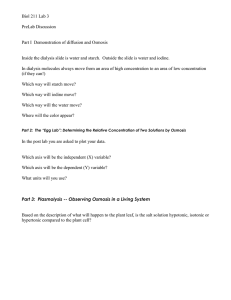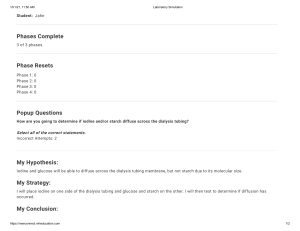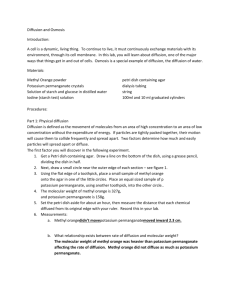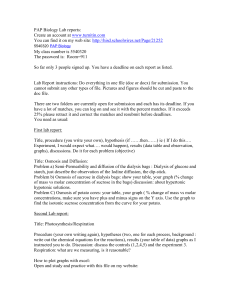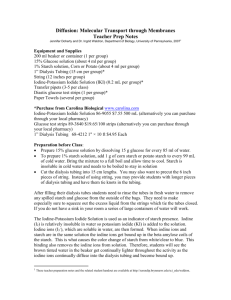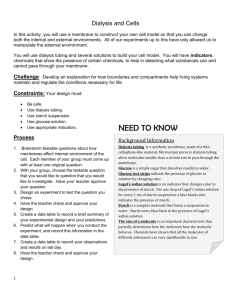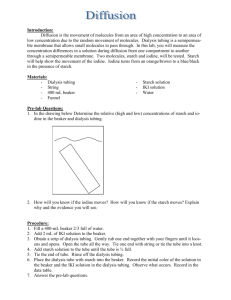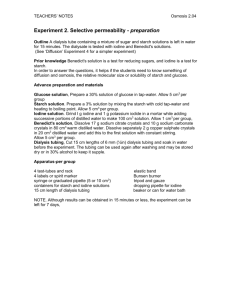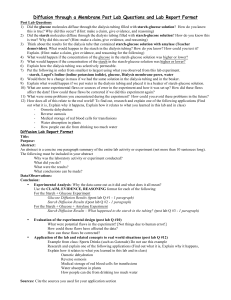Osmosis & Diffusion: Year 11 Biology Practical Activity
advertisement
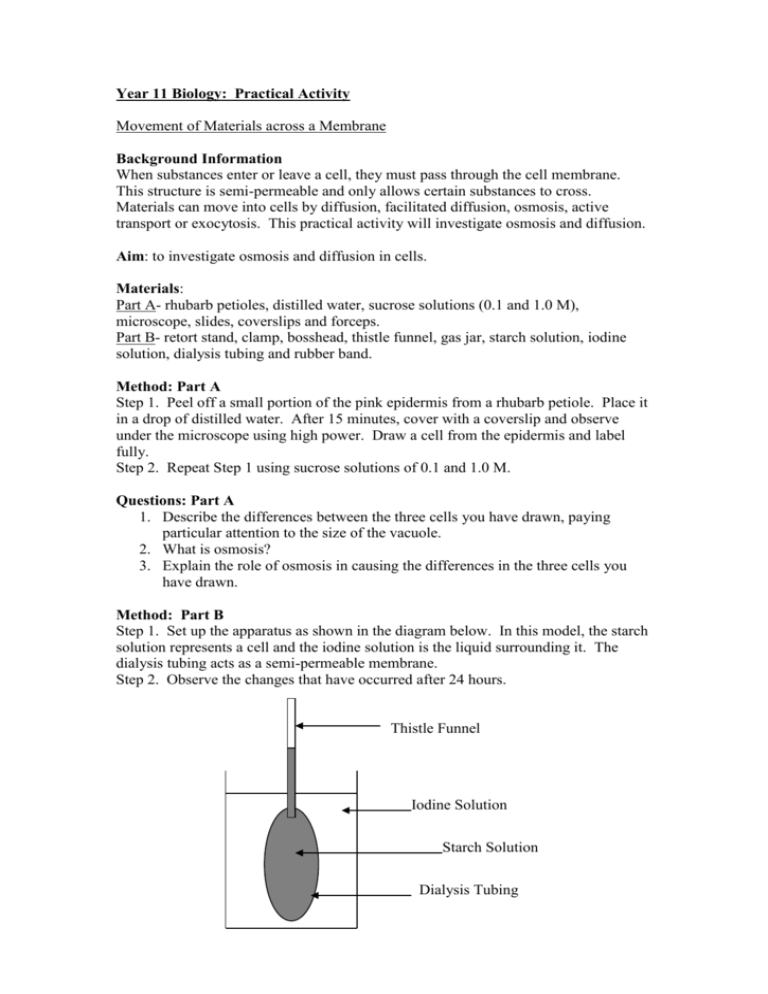
Year 11 Biology: Practical Activity Movement of Materials across a Membrane Background Information When substances enter or leave a cell, they must pass through the cell membrane. This structure is semi-permeable and only allows certain substances to cross. Materials can move into cells by diffusion, facilitated diffusion, osmosis, active transport or exocytosis. This practical activity will investigate osmosis and diffusion. Aim: to investigate osmosis and diffusion in cells. Materials: Part A- rhubarb petioles, distilled water, sucrose solutions (0.1 and 1.0 M), microscope, slides, coverslips and forceps. Part B- retort stand, clamp, bosshead, thistle funnel, gas jar, starch solution, iodine solution, dialysis tubing and rubber band. Method: Part A Step 1. Peel off a small portion of the pink epidermis from a rhubarb petiole. Place it in a drop of distilled water. After 15 minutes, cover with a coverslip and observe under the microscope using high power. Draw a cell from the epidermis and label fully. Step 2. Repeat Step 1 using sucrose solutions of 0.1 and 1.0 M. Questions: Part A 1. Describe the differences between the three cells you have drawn, paying particular attention to the size of the vacuole. 2. What is osmosis? 3. Explain the role of osmosis in causing the differences in the three cells you have drawn. Method: Part B Step 1. Set up the apparatus as shown in the diagram below. In this model, the starch solution represents a cell and the iodine solution is the liquid surrounding it. The dialysis tubing acts as a semi-permeable membrane. Step 2. Observe the changes that have occurred after 24 hours. Thistle Funnel Iodine Solution Starch Solution Dialysis Tubing Questions: Part B 1. What is diffusion? 2. Describe the change that has occurred to the starch solution. 3. Refer to Question 2. Explain why this change has occurred. 4. Describe the change that has occurred to the iodine solution. 5. Refer to question 4. Explain why this change has occurred. 6. Why is iodine able to diffuse through the dialysis tubing whereas starch cannot? Questions: Part C 1. Which solution caused the greatest increase in the weight of the potato ‘chips’? 2. Refer to Question 1. Explain why this solution caused the greatest weight increase. 3. Which solution caused the greatest decrease in the weight of the potato ‘chips’? 4. Refer to Question 3. Explain why this solution caused the greatest weight decrease. 5. From your graph, determine the concentration of sucrose that caused no increase in weight. 6. Refer to Question 5. Explain why there was no increase in the weight of the potato ‘chips’ at this concentration. 7. Describe any unexpected results from this experiment. 8. Propose an explanation for any unexpected results. 9. Describe three sources of error in this experiment. 10. Refer to your answer to Question 9. How could these sources of error be reduced or eliminated?
